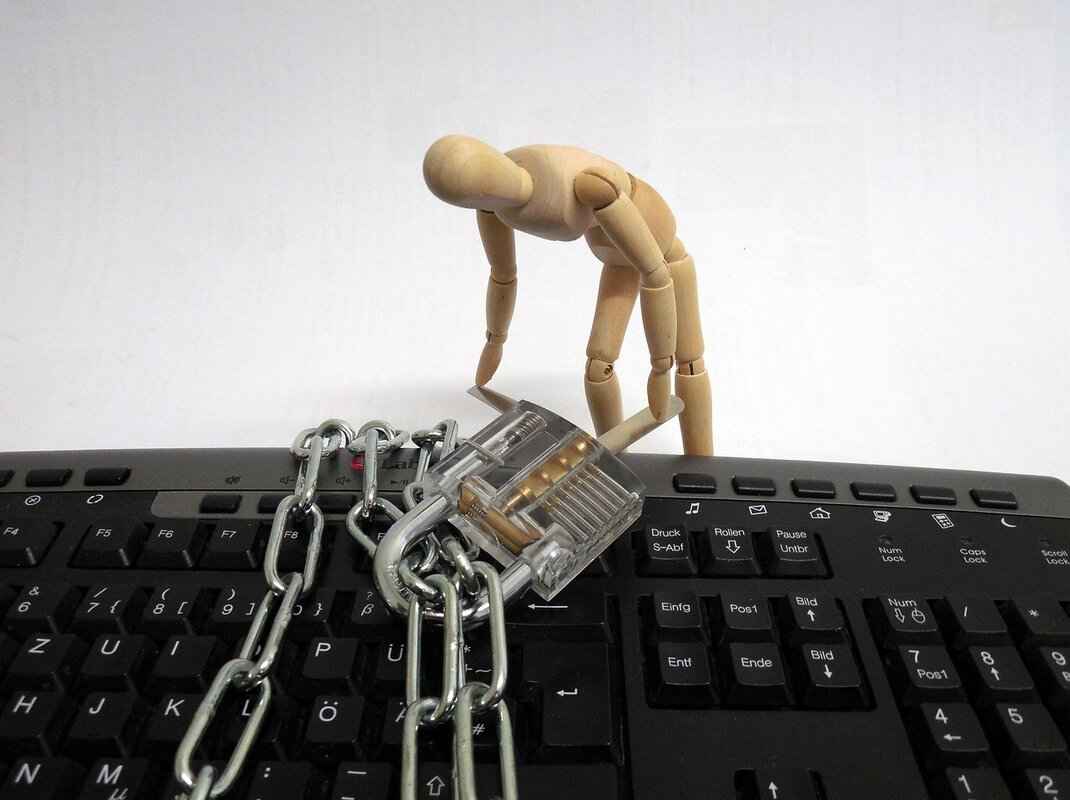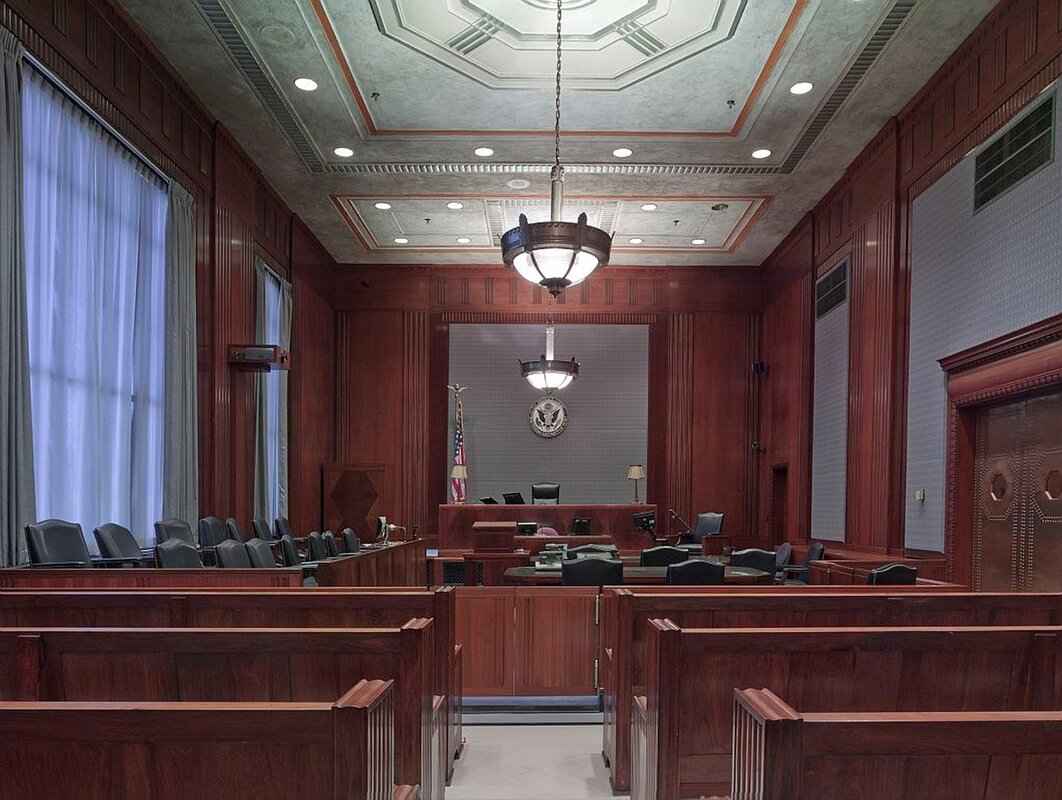Understanding the intricacies of theft law is crucial for both prosecution and defense in a court of law. This article delves into the legal criteria required for proving theft, which encompasses various elements, types of evidence, and strategic considerations for both sides.
Theft is legally defined as the unlawful taking of someone else’s property with the intent to permanently deprive the owner of it. Grasping this definition is vital as it forms the foundation of any theft-related legal proceedings.
Elements Required to Prove Theft
- The Unlawful Taking of Property: The prosecution must demonstrate that the accused took property without the owner’s consent. This involves showing that the property was physically removed from the owner’s possession.
- Intent to Permanently Deprive: Intent plays a crucial role in theft cases. The prosecution must establish that the accused intended to permanently deprive the owner of their property. This intent can sometimes be inferred from the circumstances surrounding the act.
- Ownership of the Property: Establishing rightful ownership is essential. The prosecution is required to provide evidence that the property belonged to someone other than the accused, making it clear that the taking was unlawful.
Types of Evidence Used in Theft Cases
In court, various forms of evidence can be presented to support a theft claim. This evidence may include:
- Witness Testimonies: Eyewitness accounts can significantly influence the outcome of a case, providing critical insights into the events surrounding the alleged theft.
- Surveillance Footage: Video evidence can capture the act of theft in real time, serving as powerful proof of the accused’s actions.
- Physical Evidence: Items such as fingerprints or tools used in the commission of the theft can also serve as compelling evidence.
Defensive Strategies Against Theft Charges
Defendants in theft cases can employ various strategies to contest the charges against them:
- Claiming Ownership: A common defense is asserting that the accused had a legitimate claim to the property, which may involve demonstrating prior ownership or permission to use the property.
- Lack of Intent: Another strategy is to argue that the accused did not possess the intent to steal, possibly showing that the taking was accidental or that permission was believed to have been granted.
Impact of Prior Convictions on Theft Cases
Prior convictions can significantly influence the prosecution’s approach in theft cases. A history of theft-related offenses may lead to harsher penalties if found guilty, while a clean record might mitigate consequences.
Legal Consequences of Theft Convictions
The penalties for theft can vary widely based on the severity of the crime. Consequences may include fines, restitution, and imprisonment. Understanding these potential outcomes emphasizes the importance of a robust legal defense.
In conclusion, proving theft in court involves a thorough understanding of the legal criteria, elements required, types of evidence, and strategies for both prosecution and defense. Navigating these complexities necessitates careful preparation and a strategic approach to ensure justice is served.

Understanding the Legal Definition of Theft
The concept of theft is pivotal within the legal framework, as it encapsulates the unlawful appropriation of another individual’s property. Understanding this definition is not merely academic; it is essential for navigating legal proceedings effectively. In this section, we delve into the intricacies of the legal definition of theft, exploring its components and implications.
Theft is fundamentally defined as the unlawful taking of someone else’s property with the intent to permanently deprive the owner of it. This definition is crucial because it establishes the foundation upon which theft cases are built. To grasp the full scope of what constitutes theft, one must consider the following key elements:
- Unlawful Taking: This element signifies that the accused took property without the owner’s consent. It is imperative to demonstrate that the property was removed from the owner’s possession.
- Intent: Intent plays a critical role in determining whether an act qualifies as theft. The prosecution must prove that the accused intended to permanently deprive the owner of their property. This intent can often be inferred from the circumstances surrounding the act.
- Ownership: Establishing the rightful ownership of the property in question is essential. The prosecution must provide clear evidence that the property belonged to someone other than the accused.
Each of these elements must be clearly established for a successful prosecution. If any element is lacking, it may weaken the case significantly. For instance, if the defense can show that the accused had permission to take the property, the charge of theft may not hold.
Furthermore, the legal definition of theft can vary slightly between jurisdictions, emphasizing the importance of understanding local laws. In some states, theft may encompass various forms, such as larceny, burglary, and shoplifting, each with its specific legal nuances.
In addition to understanding the definition, it is essential to recognize the implications of theft charges. Being accused of theft can lead to severe consequences, including legal penalties, a tarnished reputation, and potential civil liabilities. Therefore, both the prosecution and defense must approach theft cases with a comprehensive understanding of the law and the specific circumstances surrounding each case.
In conclusion, a firm grasp of the legal definition of theft is vital for anyone involved in or studying the legal system. Whether you are a legal professional, a defendant, or merely a curious observer, understanding the elements of theft is key to navigating the complexities of legal proceedings.

Elements Required to Prove Theft
To establish a theft case in court, the prosecution must demonstrate several key elements that together constitute the crime of theft. Each of these elements carries significant weight in the legal process, and a thorough understanding of them is essential for both the prosecution and the defense.
The first element of theft is the unlawful taking of property. This means that the accused must have taken someone else’s property without the owner’s consent. The prosecution needs to present evidence that clearly shows the property was removed from the owner’s possession. This can involve:
- Documentary evidence, such as police reports or incident logs.
- Physical evidence, including the stolen items themselves.
- Witness testimonies that can confirm the act of taking.
Another crucial element is the intent behind the act. The prosecution must prove that the accused intended to permanently deprive the owner of their property. This intent can sometimes be inferred from the circumstances surrounding the case. For instance:
- If the accused was found in possession of the stolen property shortly after the theft, this can suggest intent.
- Statements made by the accused before or after the theft may also indicate their intentions.
Establishing ownership is vital in a theft case. The prosecution must provide clear evidence that the property belonged to someone other than the accused. This can include:
- Title documents or receipts proving ownership.
- Witnesses who can attest to the rightful ownership of the property.
Without proving ownership, the case for theft significantly weakens, as it raises questions about whether a crime has even occurred.
To support a theft claim, various types of evidence can be presented in court. This may include:
- Witness testimonies: Eyewitness accounts can provide crucial details about the incident.
- Surveillance footage: Video evidence can capture the theft in real time, serving as powerful proof.
- Physical evidence: Items recovered from the accused that can be linked to the theft.
Given the complexities involved in proving theft, it is essential for both parties to have competent legal representation. An experienced attorney can help navigate the intricacies of the law, ensuring that all elements of the case are adequately addressed. This includes:
- Identifying and presenting evidence effectively.
- Challenging the prosecution’s claims regarding intent and ownership.
- Utilizing expert witnesses when necessary to clarify complicated legal matters.
Understanding these elements and their implications is vital for anyone involved in a theft case. Whether you are a victim seeking justice or an accused individual defending against charges, being informed about the legal requirements is crucial for achieving a favorable outcome.
The Unlawful Taking of Property
The act of theft is a serious offense, and understanding the legal framework surrounding it is crucial for both prosecution and defense. One of the most fundamental elements of proving theft is establishing the unlawful taking of property. This section delves into what this entails and how it can be demonstrated in a court of law.
To prove that the accused unlawfully took property, the prosecution must first establish that the property in question was indeed taken without the owner’s consent. This involves presenting evidence that clearly shows the property was removed from the owner’s possession. The absence of permission is a pivotal factor; if the accused had any form of authorization to take the property, then the act cannot be classified as theft.
- Possession of Property: The prosecution must demonstrate that the property was in the possession of the owner at the time of the alleged theft. This can be established through various means, such as witness testimonies or documentation proving ownership.
- Evidence of Removal: It is essential to show that the accused physically took the property away from the owner’s location. This can include surveillance footage, photographs, or eyewitness accounts that confirm the act of taking.
- Context of the Taking: The circumstances surrounding the taking are also important. For instance, if the accused was seen breaking into a property or removing items from a vehicle without permission, these actions strongly support the claim of theft.
Furthermore, the prosecution must illustrate that the taking was done intentionally. This means proving that the accused had a conscious desire to take the property without the owner’s consent, reinforcing the notion that the act was not accidental. Intent can often be inferred from the actions of the accused, such as fleeing the scene or attempting to hide the stolen property.
In some cases, the accused might argue that they believed they had permission to take the property. This defense can complicate matters, as the prosecution must then counter this claim by providing evidence that clearly indicates the lack of consent. For example, if the property was taken from a shared space where ownership was ambiguous, establishing clear ownership becomes crucial.
Additionally, the prosecution may present expert testimonies to clarify the value of the stolen property, reinforcing the significance of the theft. This can help the jury understand the implications of the crime and the impact on the victim.
Overall, proving the unlawful taking of property involves a multifaceted approach. The prosecution must gather compelling evidence, establish intent, and clarify ownership to build a strong case. Each element must be meticulously detailed to ensure that the jury can draw a clear conclusion regarding the accused’s actions.
Understanding these components is essential for anyone involved in a theft case, whether as a prosecutor, defense attorney, or even a juror. The clarity of the evidence presented can significantly influence the outcome, making it imperative to approach the case with diligence and thoroughness.
Intent to Permanently Deprive
The concept of intent plays a pivotal role in theft cases, especially when it comes to proving the accused’s mental state during the alleged crime. Understanding how intent is established can significantly influence the outcome of a trial. In legal terms, the prosecution must demonstrate that the accused had the intention to permanently deprive the owner of their property. This requirement is not merely a formality; it is a fundamental aspect of theft that sets it apart from other property crimes.
To establish intent, the prosecution often relies on circumstantial evidence. This type of evidence can include the actions of the accused before, during, and after the alleged theft. For instance, if an individual is caught on surveillance footage concealing stolen items or fleeing the scene, these behaviors can suggest a clear intention to permanently deprive the owner of their property. Additionally, statements made by the accused, either to law enforcement or in casual conversation, can also reveal their mindset and intentions.
Moreover, the context surrounding the theft can provide significant insights into the accused’s intent. For example, if an individual enters a property without permission and takes items that they know belong to someone else, this can be interpreted as an intention to permanently deprive the owner of those items. The prosecution may argue that the accused’s knowledge of the property’s ownership and their subsequent actions demonstrate a clear intent to steal.
Another important factor is the value of the property. In many jurisdictions, the value of the stolen items can influence the severity of the charges. If the items taken are of significant value, it may be easier for the prosecution to argue that the accused had a serious intent to deprive the owner of their property. Conversely, if the items are of minimal value, the defense may argue that the taking was not intended to be permanent, potentially leading to lesser charges.
In some cases, the defense may challenge the prosecution’s assertion of intent. They may argue that the accused did not intend to permanently deprive the owner of their property, suggesting that the taking was accidental or that the accused believed they had permission to take the items. This defense strategy can be particularly effective if there is ambiguity surrounding the circumstances of the theft.
Additionally, the role of witness testimonies cannot be overlooked. Eyewitnesses who can attest to the accused’s behavior or statements made during the incident can provide critical evidence regarding intent. Their accounts can help paint a clearer picture of the events leading up to the alleged theft, influencing the jury’s perception of the accused’s state of mind.
In summary, establishing intent to permanently deprive the owner of their property is a crucial element in theft cases. The prosecution must present compelling evidence that not only demonstrates the unlawful taking of property but also the mental state of the accused at the time of the crime. Circumstantial evidence, witness testimonies, and the context of the theft all play vital roles in this determination. Understanding these factors can be essential for both the prosecution and defense in navigating the complexities of theft cases.
Ownership of the Property
In the realm of theft cases, establishing the rightful ownership of the property in question is a crucial aspect of the prosecution’s argument. Without proving that the property belonged to someone other than the accused, the case may falter. This article delves deeper into the significance of property ownership in theft cases, the types of evidence required, and how it impacts the judicial process.
Property ownership refers to the legal rights held by an individual or entity over a specific item or piece of real estate. In theft cases, the prosecution must demonstrate that the property was owned by a third party and that the accused had no legal claim to it. This is essential because it addresses one of the key elements of theft: the unlawful taking of someone else’s property.
To substantiate claims of ownership, various types of evidence can be presented in court:
- Title Deeds: For real estate, title deeds are the most straightforward proof of ownership.
- Receipts and Invoices: For personal property, receipts or invoices can help establish that the property was purchased by the owner.
- Witness Testimonies: Individuals who can attest to the ownership of the property can provide valuable testimonies.
- Photographic Evidence: Photos showing the owner with the property or in possession of it can support ownership claims.
Documentation plays a significant role in establishing ownership. The prosecution must present clear and convincing evidence that links the property to the rightful owner. This documentation may include:
- Ownership records- Insurance policies- Registration documents for vehicles- Contracts of sale
Each of these documents serves to reinforce the claim that the property in question belonged to someone other than the accused.
While establishing ownership is vital, it can also present challenges for the prosecution. For instance, if the ownership records are incomplete or if there are disputes regarding ownership, the case may become complicated. Additionally, if the accused can provide evidence of their own claim to the property, it may create reasonable doubt in the minds of the jury.
Defendants in theft cases often utilize the ownership aspect to build their defense. They may argue that they had a legitimate right to possess the property, thus negating the claim of theft. Common defenses include:
- Claiming Ownership: The accused may assert that they are the rightful owner of the property.
- Permission from the Owner: They may argue that they had permission from the actual owner to take or use the property.
The evidence presented regarding ownership can significantly influence the outcome of a theft trial. If the prosecution successfully establishes that the property belonged to a third party, it strengthens their case and increases the likelihood of a conviction. Conversely, if the defense can effectively challenge the prosecution’s ownership claims, it may lead to an acquittal.
In summary, the ownership of property is a fundamental element in theft cases. The prosecution must provide compelling evidence to prove that the property belonged to someone other than the accused. This requirement not only shapes the prosecution’s strategy but also significantly impacts the defense’s approach. Understanding the nuances of property ownership and its implications in theft cases can be crucial for both legal practitioners and individuals involved in such matters.
Types of Evidence Used in Theft Cases
In the realm of criminal law, particularly in theft cases, the types of evidence presented can significantly influence the outcome of a trial. Understanding the various forms of evidence is essential for both prosecution and defense teams to build a robust case. Below, we delve into the most common types of evidence used to support theft claims in court.
When it comes to proving theft, a multitude of evidence types can be leveraged. Each type serves a unique purpose and can either strengthen or weaken a case. Here are the most prevalent categories:
- Witness Testimonies: Eyewitness accounts can provide firsthand information about the alleged incident. Testimonies from individuals who were present during the theft can offer vital context and details that may not be captured by other forms of evidence.
- Surveillance Footage: In our digital age, video evidence has become a cornerstone in many theft cases. Surveillance cameras installed in public spaces or private properties can capture the act of theft, providing visual proof of the accused’s actions.
- Physical Evidence: This includes any tangible items related to the theft, such as stolen property, tools used in the crime, or fingerprints found at the scene. Physical evidence can help establish a link between the accused and the crime.
- Digital Evidence: In an increasingly digital world, electronic records such as emails, texts, or social media posts can play a critical role in establishing motive or intent, as well as proving ownership of the stolen property.
- Expert Testimonies: In some cases, expert witnesses may be brought in to provide insights regarding the value of the stolen items or to explain the methods used in the theft. Their specialized knowledge can help clarify complex issues for the jury.
Witness testimonies are often regarded as one of the most compelling forms of evidence in theft cases. The credibility of eyewitnesses can significantly sway a jury’s perception of the events in question. Prosecutors typically seek out individuals who can provide clear, detailed accounts of the theft, emphasizing the importance of reliability and consistency in their statements.
Prosecutors often engage in thorough investigations to gather eyewitness accounts. This may involve interviewing bystanders, reviewing police reports, and even canvassing the area for additional witnesses. The more corroborating testimonies available, the stronger the prosecution’s case becomes.
Surveillance footage is invaluable in modern theft cases. It serves as objective evidence that can either confirm or refute claims made by the accused and witnesses. High-quality video can vividly depict the events leading up to, during, and following the theft, making it a powerful tool for both prosecution and defense.
Physical evidence, such as stolen goods or tools used in the crime, can provide direct links to the accused. Similarly, digital evidence has become increasingly relevant, especially in cases involving online transactions or digital theft. Establishing a connection between the accused and the stolen property through these means can be pivotal.
Expert witnesses can offer specialized insights that may not be readily apparent to a layperson. For instance, an appraiser may testify about the value of the stolen property, while a forensic analyst might explain how the crime was executed. Their contributions can help the jury understand the nuances of the case, thereby influencing their verdict.
In conclusion, the types of evidence presented in theft cases are varied and can significantly impact the trial’s outcome. By understanding the role of witness testimonies, surveillance footage, and both physical and digital evidence, all parties involved can better prepare for the complexities of a theft prosecution.

Witness Testimonies and Their Importance
Witness testimonies play a pivotal role in the legal landscape, especially in theft cases. The reliability and clarity of eyewitness accounts can significantly sway the jury’s perception, thereby influencing the outcome of the trial. Understanding the nuances of how witness testimonies are gathered, evaluated, and presented is essential for both the prosecution and defense.
Eyewitness accounts are often considered one of the most compelling forms of evidence in court. When a witness observes the alleged theft, their testimony can provide crucial details about the incident, such as the time, location, and individuals involved. These accounts can help establish a timeline and context, which are vital for the prosecution’s narrative.
Prosecutors typically prioritize gathering eyewitness testimonies immediately after the incident. This urgency is due to the natural fading of memory over time. Witnesses may be interviewed at the scene or shortly thereafter to capture their recollections while the details are still fresh. It is essential for the prosecution to ensure that these accounts are recorded accurately, as inconsistencies can undermine their credibility.
While eyewitness testimonies can be powerful, several factors can affect their reliability:
- Lighting Conditions: Poor visibility can impair a witness’s ability to accurately recall details.
- Stress Levels: High-stress situations may lead to fragmented memories.
- Duration of Observation: The length of time a witness observes the event can impact their accuracy.
- Cross-Racial Identification: Studies suggest that individuals may struggle to accurately identify people of different races.
In addition to eyewitness accounts, expert testimonies can enhance the prosecution’s case. Experts may provide insights into the psychology of memory, helping the jury understand how memories can be influenced or distorted. They may also assess the value of the stolen property, adding context to the theft’s impact.
For the defense, challenging the credibility of eyewitness testimonies is a common strategy. This may involve:
- Highlighting Inconsistencies: Pointing out discrepancies in witness accounts can raise doubts about their reliability.
- Questioning the Witness’s Perspective: Demonstrating that the witness had an obstructed view or was under stress can weaken their account.
- Introducing Alibi Evidence: Providing evidence that the accused was elsewhere at the time of the theft can effectively counter eyewitness testimonies.
In court, the admissibility of eyewitness testimonies is governed by specific legal standards. Courts often evaluate the reliability of these accounts based on factors such as the witness’s opportunity to observe the event, the level of attention paid, and the accuracy of their prior descriptions. A thorough understanding of these standards is critical for both prosecution and defense attorneys.
With advancements in technology, methods for gathering and presenting eyewitness testimonies have evolved. Tools such as video recordings and digital lineups can enhance the accuracy of identifications and provide additional context to the jury. However, reliance on technology also raises questions about the potential for bias and the integrity of the evidence presented.
In summary, witness testimonies are a cornerstone of theft cases, with the potential to significantly influence legal outcomes. Both sides must navigate the complexities surrounding these accounts, ensuring that they are presented and challenged effectively to uphold justice.
Gathering Eyewitness Accounts
In the realm of criminal law, particularly in cases involving theft, the significance of eyewitness accounts cannot be overstated. Eyewitnesses serve as vital sources of evidence that can either strengthen or weaken a case. Their testimonies are often pivotal in establishing the events that transpired during the alleged theft, offering firsthand insights that can enhance the prosecution’s narrative.
Why Eyewitness Accounts Matter
Eyewitness accounts are crucial because they provide a direct link to the alleged crime. They can help establish the timeline of events, identify the accused, and confirm the details surrounding the theft. When jurors hear consistent and credible testimonies from multiple eyewitnesses, it can significantly bolster the credibility of the prosecution’s case.
Challenges in Eyewitness Testimony
Despite their importance, eyewitness accounts can be fraught with challenges. Memory can be unreliable, and various factors such as stress, lighting, and distance can affect a witness’s recollection of events. Furthermore, the phenomenon known as memory distortion can occur, where witnesses inadvertently alter their memories based on suggestions or discussions with others. This makes it essential for prosecutors to carefully evaluate the reliability of each eyewitness before presenting their testimonies in court.
Strategies for Gathering Eyewitness Accounts
- Prompt Interviews: Prosecutors should conduct interviews with eyewitnesses as soon as possible after the incident. This helps to capture their recollections while the events are still fresh in their minds.
- Detailed Questioning: It is important to ask open-ended questions that encourage witnesses to share their observations without leading them to specific answers.
- Corroboration: Whenever possible, prosecutors should seek to corroborate eyewitness accounts with other forms of evidence, such as surveillance footage or physical evidence from the crime scene.
The Role of Eyewitnesses in Court
During the trial, eyewitnesses may be called to testify about what they saw. Their presence in court can have a powerful impact on the jury. The way a witness presents themselves—through their demeanor, confidence, and clarity—can influence how their testimony is perceived. Prosecutors must prepare witnesses thoroughly to ensure they understand the importance of their role and the details they need to convey.
Expert Testimony on Eyewitness Reliability
In some cases, the prosecution may call upon experts in psychology or criminology to discuss the factors that can affect eyewitness reliability. This can help the jury understand the complexities involved in human memory and perception, providing context for any discrepancies that may arise during testimonies.
Conclusion
In summary, gathering eyewitness accounts is a critical component of proving theft in court. While these testimonies can significantly enhance the prosecution’s case, it is essential to approach them with caution and thoroughness. By employing effective strategies for collecting and presenting eyewitness evidence, legal professionals can strengthen their arguments and work towards a just resolution.
Expert Testimonies in Theft Cases
In legal proceedings involving theft, the role of expert witnesses can be pivotal. These professionals bring specialized knowledge that can illuminate various aspects of a case, particularly when the intricacies of the crime are complex. Their insights can significantly influence the court’s understanding and the jury’s perception of the evidence presented.
One primary function of an expert witness in theft cases is to assess the value of the stolen property. This is particularly relevant in cases where the value of the item can influence the severity of the charges. For instance, theft of high-value items, such as art or jewelry, may be classified as a felony, while lower-value items might result in misdemeanor charges. Expert witnesses can provide appraisals based on market trends, historical significance, and other factors that contribute to an item’s worth. Their testimony can help establish whether the accused’s actions constitute a serious crime or a lesser offense.
Additionally, expert witnesses can offer insights into the methods of theft. For example, a forensic expert might explain how a particular burglary technique was employed, or a security expert could discuss vulnerabilities in a property’s security system that allowed the theft to occur. Such testimony not only clarifies the mechanics of the crime but also helps the court understand the level of sophistication involved, which can be critical in determining intent.
Moreover, the use of expert testimonies can aid in addressing potential defenses. If a defendant claims that the theft was opportunistic rather than premeditated, an expert might analyze the circumstances surrounding the theft to provide context. For instance, if the stolen property was easily accessible due to a lack of security, the expert could argue that the theft was impulsive rather than planned.
In some cases, expert witnesses can also assist in evaluating the credibility of evidence. For example, if surveillance footage is a key piece of evidence, an expert in video analysis might be brought in to assess its authenticity or clarity. They can help determine whether the footage accurately depicts the events in question and whether it should be considered reliable evidence.
The effectiveness of expert testimony often hinges on the witness’s ability to communicate complex ideas in a way that is understandable to the jury. This involves not only presenting data and findings but also engaging with the jury to clarify misconceptions and answer questions. A skilled expert can bridge the gap between technical knowledge and lay understanding, making their insights more impactful.
Furthermore, the credibility of an expert witness can significantly affect their testimony’s weight. Factors such as the expert’s qualifications, experience, and previous work in similar cases can enhance their authority in the eyes of the court. Legal teams often conduct thorough background checks to ensure that the expert they choose can withstand scrutiny during cross-examination.
In conclusion, expert testimonies play a crucial role in theft cases by providing valuable insights into the value of stolen property, the methods of theft, and the credibility of evidence. Their contributions can clarify complex issues and help the court make informed decisions. As such, both prosecution and defense teams should carefully consider the selection and presentation of expert witnesses to strengthen their cases.

Role of Surveillance Footage
In today’s world, surveillance footage has emerged as a critical piece of evidence in legal cases, particularly in theft prosecutions. This technology not only enhances security but also serves as a vital tool in the judicial system. The ability to capture events in real time provides law enforcement and legal professionals with a powerful means of establishing facts in court.
When it comes to proving theft, video evidence can be indispensable. It offers a visual account of the events, allowing juries and judges to witness the alleged crime as it unfolded. This can significantly bolster the prosecution’s case, providing indisputable proof of the accused’s actions. In many instances, the presence of clear video evidence can lead to quicker resolutions, as it often negates the need for extensive witness testimonies.
One of the primary advantages of surveillance footage is its ability to capture the context surrounding the theft. For example, the footage can show the accused’s behavior before, during, and after the incident, which can provide insights into their intent. This context is crucial in theft cases, where proving intent is a necessary element of the crime. If the footage shows the accused acting suspiciously or attempting to conceal their actions, it can strongly suggest that they had the intent to steal.
Furthermore, surveillance footage can also help establish the ownership of the property in question. By capturing images of the property in its rightful place and the accused taking it, the footage can serve as a visual confirmation of ownership. This is particularly important in theft cases where ownership may be disputed.
However, it’s essential to note that the quality of the surveillance footage can significantly impact its effectiveness as evidence. High-resolution video that clearly captures the accused’s face and actions will be more compelling than grainy or unclear footage. Additionally, the chain of custody for the footage must be well-documented to ensure its integrity. Any gaps in this chain can lead to challenges regarding the admissibility of the evidence in court.
Moreover, the legal implications of surveillance footage extend beyond just theft cases. In many jurisdictions, there are laws governing the use of surveillance cameras, particularly in public spaces. Understanding these laws is essential for both the prosecution and defense. For instance, if the footage was obtained illegally, it may be deemed inadmissible, which could weaken the prosecution’s case.
In summary, surveillance footage plays a pivotal role in the prosecution of theft cases. Its ability to provide real-time evidence of the crime, establish intent, and confirm ownership makes it a powerful tool in the legal arsenal. As technology continues to advance, the reliance on video evidence in court is likely to increase, highlighting the importance of understanding its implications in the judicial process.

Defensive Strategies Against Theft Charges
When facing theft charges, defendants have a range of defensive strategies that can be employed to contest the allegations. Understanding these strategies is crucial for both defendants and their legal representatives, as they can significantly influence the outcome of a case.
One of the most common defenses in theft cases is the assertion of ownership or a legitimate claim to the property in question. This defense hinges on the ability of the accused to demonstrate that:
- They were the rightful owner of the property.
- They had permission to take the property from the actual owner.
- There was a misunderstanding regarding ownership rights.
For example, if a person takes a vehicle believing it to be theirs due to a prior ownership claim, they may argue that there was no intent to steal.
Another prevalent defense is the argument that the accused lacked the intent to permanently deprive the owner of their property. This can involve several scenarios:
- The property was taken accidentally, without the knowledge that it belonged to someone else.
- The accused believed they had permission to use the property.
- The accused intended to return the property shortly after taking it.
Demonstrating a lack of intent can often be pivotal in reducing the severity of charges or even achieving a dismissal.
In some cases, defendants may claim that they were under duress or coercion at the time of the alleged theft. This defense asserts that the accused was forced to commit the act due to threats of harm to themselves or others. Establishing this defense may require:
- Evidence of threats made against the accused.
- Witness testimonies supporting claims of coercion.
This defense can be particularly effective in cases where the accused was acting under extreme pressure or fear.
Defendants can also challenge the prosecution’s case by arguing that there is insufficient evidence to prove the allegations beyond a reasonable doubt. This can involve:
- Questioning the credibility of witness testimonies.
- Highlighting inconsistencies in the prosecution’s narrative.
- Pointing out the absence of physical evidence linking the accused to the crime.
By creating reasonable doubt, the defense can potentially lead to a not-guilty verdict.
Another effective strategy is presenting an alibi, which is evidence that the defendant was elsewhere when the theft occurred. This can include:
- Witness statements confirming the defendant’s location.
- Surveillance footage showing the defendant at a different location.
- Receipts or logs indicating the defendant’s activities during the time of the alleged theft.
Successfully establishing an alibi can exonerate the accused from the charges.
In some cases, the defense may call upon expert witnesses to provide insights that support their case. This could involve:
- Experts in property valuation to argue the worth of the stolen item.
- Forensic specialists who can analyze evidence and provide alternative explanations.
Expert testimonies can add credibility to the defense’s arguments and help clarify complex issues.
Understanding these defensive strategies is vital for anyone facing theft charges. Each case is unique, and the effectiveness of these defenses can vary based on the specific circumstances involved. Therefore, it is essential for defendants to work closely with their attorneys to develop a robust legal strategy tailored to their situation.
Claiming Ownership of the Property
In the realm of theft defense, one of the most significant strategies employed by defendants is . This defense hinges on the assertion that the accused had a legitimate right to possess or utilize the property in question. Establishing this claim can be pivotal in undermining the prosecution’s case and demonstrating that the accused did not engage in theft.
The basis for this defense often involves presenting evidence that supports prior ownership or permission to use the property. For instance, if the accused can provide documentation such as receipts, contracts, or witness statements that affirm their ownership rights, it can significantly strengthen their position. Furthermore, testimonies from individuals who can confirm the accused’s rights to the property can also play a crucial role in establishing legitimacy.
In some cases, the accused may assert that they were borrowing the property with the owner’s consent. This can involve demonstrating a history of borrowing or a verbal agreement that grants permission to use the property. For example, if a friend lends a car to another friend, and the latter is accused of theft after failing to return it on time, the defense could argue that the accused had permission to use the vehicle. This defense can be supported by text messages or other forms of communication that indicate an agreement.
Another aspect of this defense is the concept of constructive possession. This refers to situations where a person may not have physical control of the property but still has a legal right to it. For instance, if someone has a rental agreement for an apartment but is accused of stealing items from that apartment, they can argue that they have legal possession of the items due to their rental agreement.
Furthermore, the defense may also challenge the prosecution’s evidence regarding ownership. If the prosecution fails to provide clear and convincing evidence of ownership, it can weaken their case significantly. The defense can argue that without definitive proof, the presumption of innocence should prevail.
It is important to note that the effectiveness of this defense can vary based on the circumstances of each case. The defense must carefully evaluate the facts and gather substantial evidence to support their claims. Engaging a skilled attorney who specializes in theft cases can be invaluable in navigating the complexities of property ownership claims.
Ultimately, claiming ownership of the property can be a powerful defense strategy in theft cases. By presenting compelling evidence and arguments, the accused can effectively challenge the prosecution’s assertions and potentially avoid conviction. Understanding the nuances of property rights and ownership claims is essential for anyone facing theft charges, as it can significantly impact the outcome of the case.
Lack of Intent
In the realm of criminal law, particularly in theft cases, establishing the is a pivotal defense strategy. This argument asserts that the accused did not possess the requisite mental state to commit theft, which is essential for a conviction. Understanding this defense can significantly influence the outcome of a trial.
The legal definition of theft encompasses the unlawful taking of someone else’s property with the intent to permanently deprive the owner of it. Therefore, if the defense can successfully argue that the accused lacked this intent, the prosecution’s case may crumble. The absence of intent can be demonstrated through various means, including evidence of accidental taking or a genuine belief that permission was granted.
One of the primary ways to argue a lack of intent is to show that the taking of property was accidental. For instance, if an individual mistakenly believes they are taking their own belongings or inadvertently picks up an item that belongs to someone else, this can serve as a strong defense. In such cases, the defense must provide evidence that supports the claim of accident. This can include:
- Witness testimonies confirming the accidental nature of the action.
- Documentation or photographs that illustrate the circumstances surrounding the incident.
- Surveillance footage that may show the context of the taking.
Another effective argument in establishing a lack of intent is demonstrating that the accused believed they had permission to take the property. This can be particularly relevant in situations involving shared spaces or communal property. For example, if the accused was a guest in a home and took an item they believed was available for use, this belief can negate the intent to steal. To substantiate this defense, the following evidence may be presented:
- Statements from the property owner indicating that permission was granted.
- Previous interactions that suggest a pattern of permission for similar actions.
- Text messages or emails that clarify the understanding between the parties involved.
Legal precedents play a significant role in shaping the argument for lack of intent. Courts have historically recognized that intent is a crucial component of theft. For instance, in State v. Johnson, the court ruled that the defendant’s belief in having permission was sufficient to negate the intent required for a theft conviction. Such cases highlight the importance of context and the subjective understanding of the accused at the time of the incident.
In theft cases, evidence is paramount. The defense must not only assert a lack of intent but also substantiate this claim with credible evidence. This may involve:
- Gathering eyewitness accounts that corroborate the defense’s narrative.
- Utilizing expert witnesses who can speak to the psychological aspects of the accused’s belief system.
- Presenting character witnesses who can attest to the accused’s integrity and honesty.
In conclusion, the lack of intent defense is a multifaceted approach that can significantly impact the outcome of theft cases. By effectively demonstrating that the accused either acted accidentally or believed they had permission, the defense can create reasonable doubt in the minds of jurors. A thorough understanding of the legal principles and strategic presentation of evidence are crucial for a successful defense.

Impact of Prior Convictions on Theft Cases
The impact of prior convictions on theft cases is a crucial aspect of the legal landscape that can significantly influence the prosecution’s approach and the overall outcome of a case. Understanding how a defendant’s past offenses can affect their current legal situation is essential for both the prosecution and defense.
When a defendant has prior convictions, particularly for theft or related offenses, the prosecution may adopt a more aggressive stance. This is largely due to the perception that repeat offenders are more likely to engage in criminal behavior. As a result, the prosecution may seek harsher penalties or pursue more serious charges, believing that the defendant poses a greater risk to society.
- Increased Sentencing Severity: In many jurisdictions, prior convictions can lead to enhanced sentencing under “three strikes” laws or similar statutes. This means that a defendant with a history of theft may face significantly longer prison sentences than a first-time offender.
- Credibility Issues: A history of prior convictions can affect a defendant’s credibility in court. Jurors may be more inclined to believe that a defendant is guilty if they have a criminal record, which can undermine defense strategies.
- Prosecutorial Strategy: Prosecutors may use a defendant’s past convictions to establish a pattern of behavior, arguing that the defendant is likely to have committed the theft in question. This can lead to a more robust prosecution case.
On the flip side, defense attorneys must carefully consider how to address prior convictions during trial. They may employ several strategies to mitigate the impact of a defendant’s criminal history:
- Contextualizing Past Offenses: Defense attorneys can argue that the prior convictions are not indicative of the defendant’s current character or intent. They may present evidence that the defendant has since rehabilitated or changed their behavior.
- Challenging Relevance: In some cases, the defense may argue that past convictions are not relevant to the current case, especially if they occurred many years ago or are unrelated to theft.
- Focus on Current Evidence: The defense can also emphasize the lack of substantial evidence linking the defendant to the current theft, aiming to shift the jury’s focus away from the past.
Furthermore, the legal implications of prior convictions extend beyond the courtroom. Defendants with a criminal history may face challenges in securing employment, housing, and other opportunities post-conviction, which can perpetuate a cycle of crime. This reality underscores the importance of addressing the root causes of criminal behavior and advocating for rehabilitative measures.
In summary, prior convictions can profoundly impact theft cases, shaping the prosecution’s strategy and influencing the jury’s perception. Both sides must navigate this complex issue carefully, as the stakes are high. Understanding the implications of a defendant’s criminal history is vital for effective legal representation and ensuring a fair trial.

Legal Consequences of Theft Convictions
The legal landscape surrounding theft convictions is complex and varies significantly based on the nature and severity of the crime. Understanding the is crucial for both defendants and victims. This section will delve into the potential penalties, the factors influencing sentencing, and the importance of a robust legal defense.
The penalties for theft can vary widely depending on several factors, including the value of the stolen property, the circumstances of the crime, and the defendant’s prior criminal history. In general, theft offenses can be categorized into misdemeanors and felonies.
- Misdemeanor Theft: Typically involves property valued at less than a certain threshold, often between $500 and $1,000, depending on state laws. Penalties may include:
- Fines ranging from $500 to $1,000
- Restitution to the victim for the value of the stolen property
- Probation or community service
- Up to one year of imprisonment
- Felony Theft: Involves higher-value property or specific types of theft, such as burglary or armed robbery. Consequences can be severe, including:
- Fines exceeding $1,000
- Restitution to the victim
- Longer prison sentences, ranging from one year to life, depending on the crime
Several factors can influence the severity of the penalties imposed in theft cases:
- Value of the Stolen Property: Higher values generally lead to harsher penalties.
- Prior Criminal Record: Repeat offenders may face enhanced sentences.
- Use of Force or Threats: Crimes involving violence or threats can elevate charges to felonies.
- Circumstances of the Crime: Factors such as whether the theft was planned or opportunistic can affect sentencing.
In addition to imprisonment, courts often impose restitution orders, requiring the offender to compensate the victim for their losses. This can include:
- The fair market value of the stolen items
- Any additional costs incurred by the victim due to the theft
Fines are also common and can serve as a deterrent, reinforcing the legal system’s stance against theft.
Given the severe consequences associated with theft convictions, having a competent legal defense is essential. A strong defense can:
- Challenge the prosecution’s evidence
- Present mitigating circumstances
- Negotiate plea deals to reduce charges or penalties
Defendants should work closely with their attorneys to explore all available options and develop a strategy tailored to their specific situation.
Understanding the legal consequences of theft convictions is vital for anyone involved in a theft case. The range of penalties underscores the importance of a strong legal defense, as the outcome can significantly impact an individual’s future. By being informed and prepared, defendants can navigate the legal system more effectively.
Frequently Asked Questions
- What are the key elements to prove theft in court?
To prove theft, the prosecution must establish three key elements: the unlawful taking of property, the intent to permanently deprive the owner of that property, and the rightful ownership of the property. Each of these elements is crucial for building a strong case.
- How important is witness testimony in theft cases?
Witness testimony can be incredibly influential in theft cases. Eyewitness accounts can provide critical context and support the prosecution’s claims, while also helping to clarify the events surrounding the alleged theft. This can significantly sway the jury’s perception.
- Can prior convictions affect a theft case?
Yes, prior convictions can have a significant impact on theft cases. They may influence the prosecution’s approach and potentially lead to harsher penalties if the accused is found guilty. Understanding this dynamic is essential for both the defense and the prosecution.
- What defenses can be used against theft charges?
Common defenses against theft charges include claiming ownership of the property or arguing a lack of intent to steal. Defendants may assert that they had permission to take the property or that the taking was accidental, which can be pivotal in their defense strategy.
- How does surveillance footage impact theft cases?
Surveillance footage can serve as powerful evidence in theft cases. It can capture the act of theft in real-time, providing undeniable proof of the accused’s actions, which can either bolster the prosecution’s case or aid the defense, depending on the footage.














